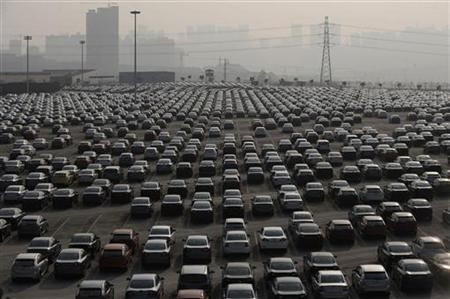Shame On Us, America
Opinion

In one of our most recent presidential debates, the candidates argued over why it's in the best of interest of the United States to support the idea that cars destined to be sold in China need to be built in China.
The question begging to be asked is: Why?
In preventing the break up and liquidation of two automobile companies, we have incurred so much pain and cost only to rationalize why foreign markets must be supplied from foreign manufacturing plants. We should instead we discussing what changes need to be made at home to enable the American manufacturer to compete globally on a cost basis.
We can’t be expected to restore full employment and resolve our growing fiscal dilemma until we resurrect the cost competitiveness of the American manufacturer. With such issues at home, why, when these foreign trade issues arise, are we so quick to believe that the difference in labor costs of an advanced economy and an emerging economy automatically render American production non-competitive?
Until 1970, national manufacturing strategies called for domestic producers to establish and enhance their international competitiveness. For each new manufacturing job introduced in the country, three service jobs were required. During the 1960 to 1970 10-year period, our economy grew at an average annual rate of 6.5 percent. Public debt was declining and consumer debt remained relatively constant at approximate $7,000 per household.
Published macro-government economic data clearly demonstrates that, when one manufacturing worker and three service workers are transferred from the ranks of the unemployed to the rolls of the fully employed, the taxes and social security payments paid by the newly employed to all levels of government approximates 31 percent of their earned income.
In addition, the government is relieved of welfare payments equal to 30 percent of the worker's previously earned income. Added together, the combination of new revenues and elimination of expense enables the government to improve its annual cash flow by 61 percent of the newly created earned income of the four re-employed workers. Expressed in terms of current day economics, this percentage, earned at an average hourly rate of pay of $16.50 per hour, generates a net improvement in government revenues of approximately $80,000.
If we are to assume that the prevailing, non-union wage rate for semi-skilled goods producing worker is $40,000 per year, the improvement in government cash flow represents two dollars for every one dollar paid by the employer to his new goods producing employee.
Let us suppose you and I are neighbors. I own the lot on a street that is close to the local college football stadium. You own the lot behind mine. On game day, I don't have enough vacant space to park all the cars of people who are attending the game. How would you react if I were to offer you the opportunity to park my overflow on your lot in exchange for my paying you 65 percent of the collected extra revenue? Would you call my 35 percent participation a commission, revenue sharing, or describe it as some new government subsidy program?
If new tax legislation were to be passed into law allowing the responsible employer to share in 35 percent of the governments improved cash flow that his efforts helped create, he would save $14 per hour worked on his new employee, or 70 percent of the $20 hourly wage.
An informal poll of employers suggests that the prospect of reducing direct labor expenses by 70 percent would cause them to reconsider their need to outsource the manufacturing component of their company's operations and encourage them to repatriate at least a portion of their current off-shore production. For of each one million new manufacturing jobs introduced into our economy, we should be able to reduce unemployment by four million jobs, or by 25 percent, and annually improve the government's annual fiscal performance by $52 billion.
Given all this, why aren't we questioning present day thinking regarding domestic manufacturing competitiveness? Why aren't we concentrating our national attention on restoring the American manufacturers' ability to compete in the global market place? When are we going to build the new cars in American-based manufacturing plants?
Shame on our government if it failed to recognize this opportunity in 1970, Shame on us, America, if we don't take advantage of this opportunity that has been patiently waiting to be recognized.
Gordon Zuckerman is the author of the acclaimed historical fiction series, "The Sentinels." He is a director at The Brubeck Institute, and several private companies. For more information, please visit www.gordonzuckerman.com.
© Copyright IBTimes 2024. All rights reserved.





















